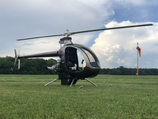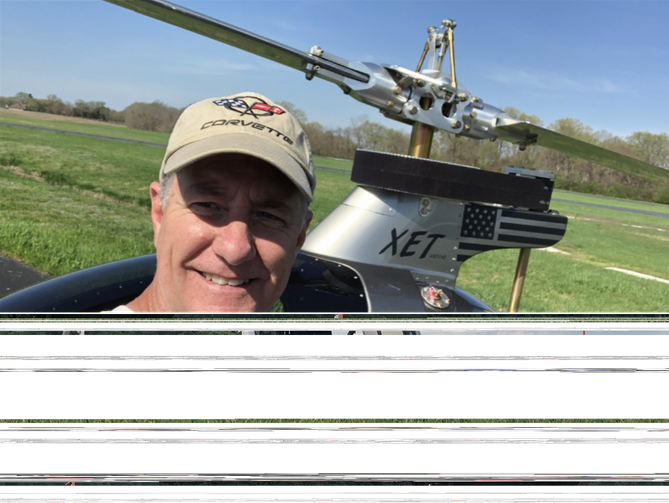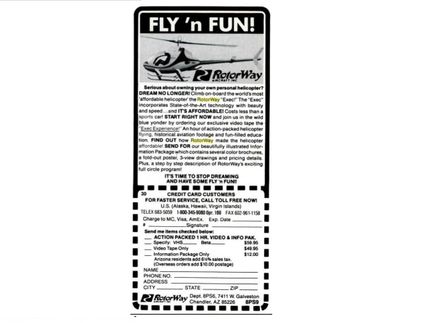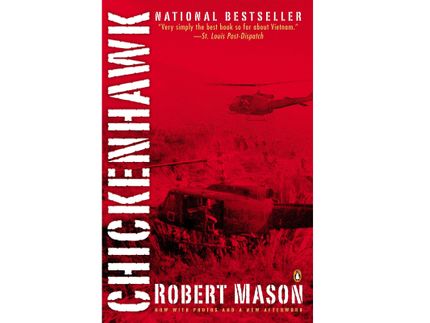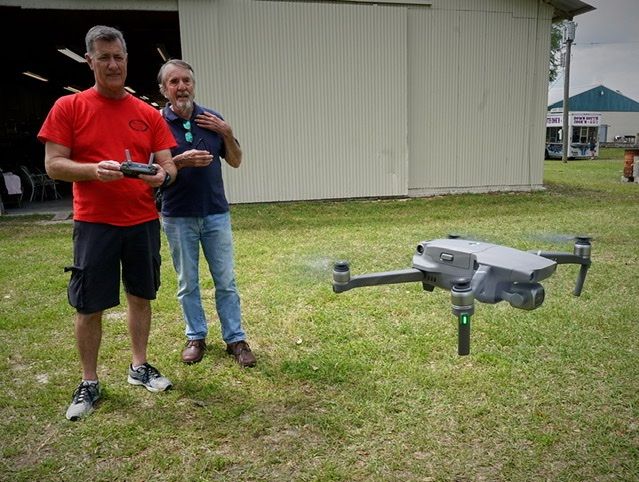Dave Storey and his Mosquito XET
I realize this is not going to be your normal quick and dirty “ABOUT” section that most websites have and more like a resume, but, I’ve been asked multiple times, how did you end up where you are? So, here is my quick and dirty story of events that has led me to this point and allowed me to be able to partner up with Composite FX and to make this website as an Authorized Dealer.
In 1982, a sophomore in high school, I found a helicopter kit advertisement in the back of a Popular Science magazine. It was for the RotorWay Exec and stated how it incorporated “State-of-the-Art technology with beauty and speed…and IT’S AFFORDABLE!”. LOL!!! I was so captivated, I scraped up $12.00, asked my mom for a check and sent off for the information package. They made it sound as if they had figured out the world of kit helicopters and could bring it all to me through an advertisement in the back of a rack magazine.
This is the RotorWay advertisement in the Popular Science magazine in 1982.
I started trying to learn and understand everything I could about helicopters and what they could actually do and just how different they were from fixed wing aircraft. I remember thinking that a helicopter must be the greatest invention ever! LOL!!!
I continued to read and learn as much as I could about helicopters, knowing good and well that I knew no one in the aviation community or that I didn’t even have enough extra money to take a helicopter lesson. I knew it would be something that I would probably never have the chance to fly.
In 1985, I was 18 years old and in my freshman year at college, I came across a book called “ChickenHawk”. This was the first book that I didn’t have to force myself to read. In fact, I was so intrigued, I would have to force myself to put the book down at the end of a chapter, and not start another one. I was living my dream through Mr. Mason's book. I would go on to read that book several more times over the years.
Mr. Robert Mason's Best Seller, CHICKENHAWK.
This is a must read if you're into helicopters.
Life happened and in 1989 I found myself married and working as much as I could to make ends meet. I had found a hobby shop in south Nashville (original Hobby Lobby) that sold a RC (remote controlled) MFA Sport 500 Helicopter kit. I scraped the money together to buy one. At 23 years old, I was so excited to have my first helicopter, even if it was an RC helicopter. It took me 8 weeks to put it together, get the engine running and build some training gear for it. This thing was not the highest of quality parts and turned out to have the highest man hour maintenance program per 15 minutes of hover time that I could have ever imagined. I never did learn how to hover with it and soon found someone to buy it. I remember thinking, this helicopter thing must be way harder than I thought!
I soon came across a higher quality RC helicopter kit. WOW! What a difference quality design, parts and instructions make. A lesson I would learn to be true with full size helicopter kits as well. I soon learned to hover, forward flight, autorotations and then aerobatics. I loved it and became very passionate about it going to every fun fly and contest I could find to go to.
Continuing to improve my skills and precision, by 1993 I was fully sponsored by Horizon Hobby for Team Kalt helicopters and Team JR for radio equipment soon followed by JR Helicopters, Morgan Fuels (Cool Power), Y.S. Engines, O.S. Engines and “V” Blades. Life was good and I was flying an average of 6 days a week and even though it was with RC helicopters, I was having a blast.
In 1997 I had made enough points in the FAI-F3C precision contest arena to qualify for an alternate position on the US Team. Because of that, I received a call from a company called Flying-Cam out of Liege Belgium. The owner had just won a Technical Achievement Grammy Award for his design of a large custom-built RC helicopter specifically built around a 35mm motion camera system. He was opening an office in, you guessed it, Los Angeles and was looking for a pilot. Life just got really interesting. With my bags packed, I was off to L.A.
These were the days before the gyro stabilized quadcopters that everyone has now and you actually had to learn and know how to fly helicopters or else it was an extremely expensive venture. The job turned out to be a true “Baptism by Fire” as these helicopters had such a high wing loading that to be successful, you had to know about and understand momentum, vortex ring state, density altitude, settling with power and how to use ground affect to your advantage. We even had density altitude charts to know how to load and fly the helicopters.
The first weekend I was there I worked on a 409 Cleaner commercial and within a couple of weeks I was off to Thailand to shoot some scenes for a movie called “The Beach” with Leonardo DiCaprio. Definitely culture shock for a Tennessee Boy!
Around 2001 while continuing to work for Flying Cam, I had the opportunity to work with one of my sponsors “V” Blades in Missouri. We did lots of R&D on rotor blade designs for aerobatic and precision flying RC helicopters and drones with up to 7’ rotor disc diameters.
It was during this time I also had some exposure to the full size experimental helicopter community as we ended up designing and building carbon fiber tail rotor blades for one of the leading RotorWay aftermarket companies. The tail rotor blades were successful and we couldn’t build them fast enough. We tested the CF tail rotor blades on a RotorWay Exec 162F and this ended up rekindling my interest in full size helicopters.
Now that I was a little older and wiser and with my experience in the professional RC community, I started analyzing the design of all the available kit helicopters on the market. With what I had learned about how to over build an RC helicopter for longevity, it seemed that I could find just enough design flaws in every full size experimental helicopter kit available to make me apprehensive, and the certified helicopters were always just out of reach financially for me to own and operate.
In early 2004 I had the opportunity to work as a contractor for AAI, now known as Textron Systems. I was called in to assist in getting a ducted fan unit platform flying called MAV (Micro Air Vehicle) and TMAV (Tactical Micro Air Vehicle). The project was successful and I was offered a full time position with AAI as a VTOL Test Specialist Pilot. Since I had obtained my pilots license, I was offered to cross train over to their fixed wing platforms. Diversity never hurts so I accepted and helped usher in and develop the Aerosonde platform, RQ-7A/B Shadow System which was already under contract to the DoD and the M2 Shadow which is now known as the NIGHTWARDEN.
The Aerosonde Platform was exciting as there was no gyro stabilization in the external flight mode and we did multiple hurricane missions out of both the NASA Wallops Island Facility in VA and the Naval Air Base in Boca Chica FL. The RQ-7A/B flight test flights was everything from software upgrades to munitions and were conducted out of Ft. Huachuca, AZ, Yuma Proving Grounds in AZ and Dugway Proving Ground in UT. Yes, I traveled a lot!
During this time, I had assisted in building major portions of a Challenger II and a Kitfox IV. In 2010 I purchased and built an experimental Sonex Kit aircraft in a tail dragger configuration with the Jabiru 3300 engine. This is an awesome airplane with a wide speed range and has taught me a lot about aviation! I have a couple of YouTube videos of this airplane. I ended up helping several other Sonex pilots with heating issues and MGL Avionics installations. I also own a 1960 Bonanza M35. Another great airplane but a little expensive come annual time. Lol… I currently have over 2,000 hours in fixed wing with a large amount of that time in experimental aircraft.
I continued to work for AAI/Textron Systems Test and Engineering for over 13 years until I was suckered into going to Afghanistan. I retired when I returned home in late 2017 from Afghanistan after completing 6 tours with over 2,700 hours of combat flight time with the RQ-7B.
While I was working overseas, I did a lot of research in my down time and I decided that it was finally time to take the experimental helicopter kit plunge. There was 1 helicopter kit that stuck out. According to the NTSB website, it had no catastrophic mechanical failures due to design and by its design appeared to be the most modern and ergonomic, and it was reasonably priced. It was the XE Series line of helicopters.
In 2015 while I was home on a 30 day R&R cycle, I purchased a Composite FX XET helicopter kit and put it in storage for when I would return home for good. In the spring of 2019 I was able to finally start on my XET kit. On this site in the PHOTOS section, you will find some pictures of that build. During the building process of the XET, I caught myself getting even more excited about this line of helicopters as to me, it appears as an over built and over sized RC helicopter with its centrifugal clutch design, gear reduction systems, tail drive shaft, gearbox systems and the rotor head with its swashplate and pushrod design. I truly believe that the XE Series line of helicopters is the safest, most ergonomic and over built RC like experimental helicopter kit on the market.
Now that I’ve purchased, built and flown one of Composite FXs XET helicopters as a customer, I see it for what it truly is and I want to help others, like me who have been waiting for the right kit to come along, achieve their goal of safely purchasing, building, registering and maintaining their very own personal helicopter at a realistic cost.
What’s that ole cliché? I used to be a customer, now I’m a dealer! LOL!!!
At the 2018 and 2019 Composite FX Factory Fly-In's down in Trenton FL, I have had the opportunity to meet and become acquainted with “THE” Mr. Robert Mason, the author of that book, CHICKENHAWK, that I read back in 1985 that helped open my eyes to helicopters and allowed me to feel what it was like to be a real helicopter pilot. AWESOME!!!
Mr Robert Mason and Dave Storey sharing a mutual interest at the 2019 Composite FX Factory Fly-In down in FL..
Storey Aviation, for all your purchasing, build and maintenance assistance needs or questions
